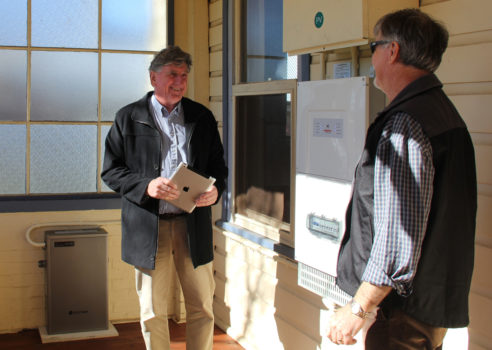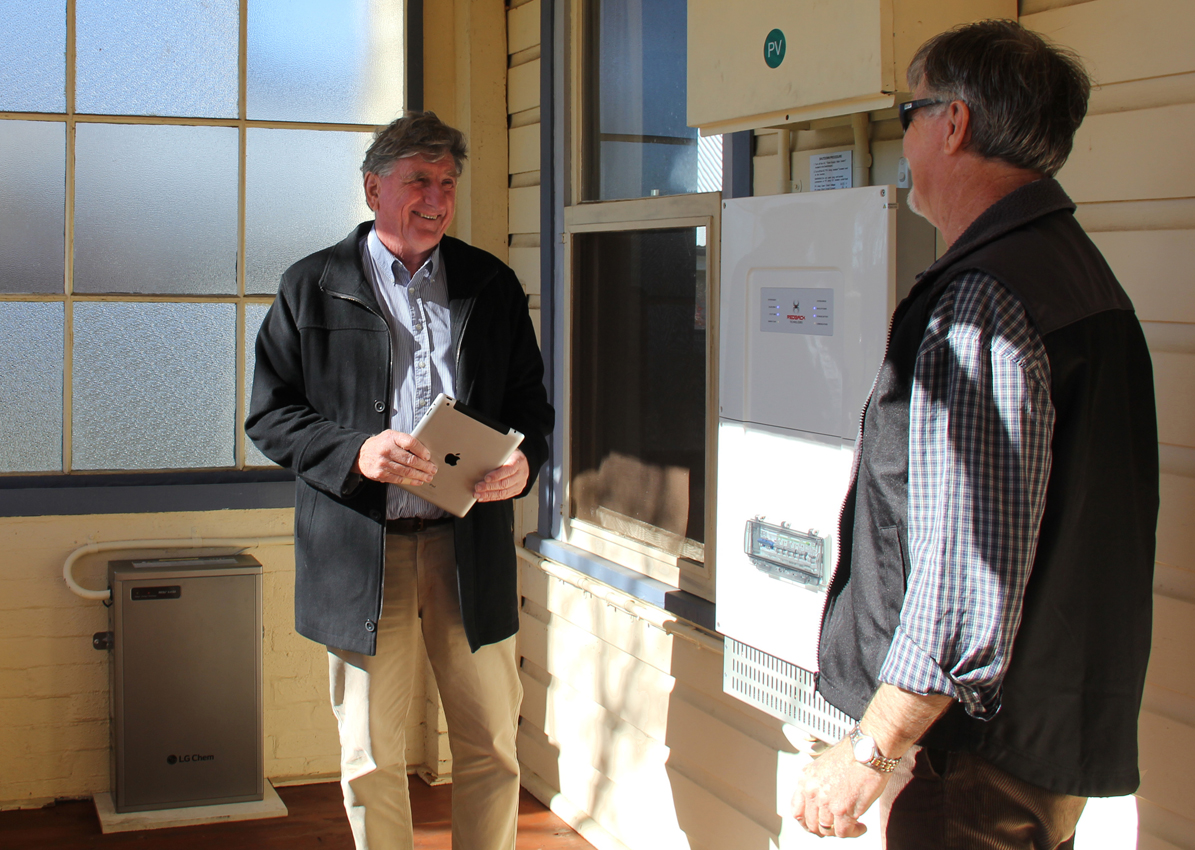
We’ve all being hearing about batteries lately. From adding a battery to a household solar PV system to the world’s biggest battery installed by Tesla on the South Australian grid. Even Prime Minister Malcolm Turnbull is talking energy storage with Snowy Hydro II. So what is all the fuss about?
As the vast majority of us know who source their energy from the electricity grid, the bills keep getting bigger. Naturally many people have installed solar panels to help reduce the bills, and “adding a battery” is the next step. Renewables are the cheapest form of energy generation available, and now with smart energy storage, clean energy becomes ‘despatch-able’ available on demand.
There are a number of benefits to having domestic energy storage combined with smart energy management equipment:
- Solar Cycling: Save some solar electricity during the day in a battery for use at night. Turn solar exports into night time electricity.
- Tariffs (charges): When your battery is fully charged and you have excess solar energy, it is exported to the grid for a Feed in Tariff. Since July 2016 many electricity retailers have increased the amount they pay for grid exports, some as high as $0.16 per kWh. If you are on a Time Of Use tariff with your energy retailer with Peak, Shoulder & Off-Peak tariffs, you can charge your battery at off-peak rates to use later when grid electricity is more expensive.
- Back-up power: Not all battery systems provide back-up power during grid failure. If the equipment you have installed has a “multi-mode” inverter, it should be able to keep the lights on and essential power circuits running during a grid outage or “blackout”.
- Grid Support: Some smart energy management systems allow your household battery to be part of a Virtual Power Plant (VPP). When remotely instructed, your battery will discharge into the grid, supporting the grid at times of high wholesale electricity prices and/or network stress. You will receive substantial credits or cheaper grid electricity from your energy retailer. Although this sounds like the future, there are already hundreds of households in NSW doing this, with many more who have the hardware In place, eligible for a planned VPP program.
Types of domestic energy storage
There are advanced lead-acid batteries, and many varieties of Lithium-Ion batteries, including block packages, or rack mounted expandable units. There are flow batteries (Zinc Bromide or Vanadium redox), molten salt batteries, and now super capacitor energy storage units. By far the most popular domestic batteries at the moment for household systems are Lithium-Ion, but if newly released super capacitors live up to their specifications, this could quickly change. A typical Lithium-Ion energy storage battery has a life of around 15 years whereas a super capacitor energy storage battery has a life of about 45 years.
A small battery can take you a long way:
With a large enough solar array, you can generate energy for daytime energy loads, charge a battery to full for later use at night, then export to grid all afternoon to try to offset the daily grid connection charges.
An Armidale example: a small energy consumption household consuming around 11kWh per day has a 4kWh solar PV system facing East & West, with a 6.4kWh battery. Hot water is generated by a heat-pump system using solar PV energy during the middle of the day. The battery is just large enough to carry the household from dusk till dawn on most nights, without requiring grid energy. Now receiving $0.16c per kWh for exported electricity, the household has a monthly energy bill that is in credit around $10 per month during the spring & summer months, and in debit a similar amount in autumn & winter months. Effectively a zero electricity bill – that is what the fuss is about.
Off the Grid
An off-grid system requires more design considerations; typically, a larger solar array and enough energy storage for at least 3 days of energy consumption to ride through most extended cloudy periods, with most opting for a back-up generator. Choose a supplier that has experience with your proposed system and one who will support you if things don’t work as intended.
With a clean, smart energy future dawning, we are creating new jobs, lowering the cost of energy, and reducing emissions. That’s something to get excited about.
By Geoff Bragg, Secretary, Smart Energy Council
